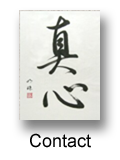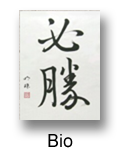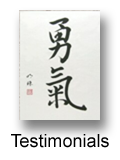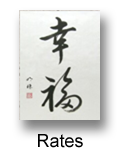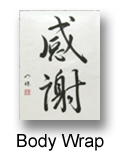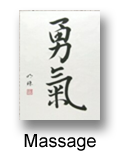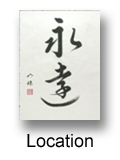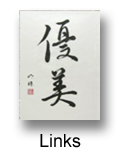What Is Fibrotherapy I
What Is Fibrotherapy II
What To Expect
Total Health Concept
Rates
What Is Fibrotherapy I
There are over nine hundred individual muscles which make up sixty percent of your body. They are the performers. They control the skeleton as well as the organs. There is no question that muscles are directly related to many of the infirmities people suffer today, from back and neck pains, to headaches, to digestive problems, and so on.
The skeletal muscles in your body are bundles of fibers that attach to the bones at a point of origin (movement toward), and a point of insertion (point of pull). The fibers blend into tendinous tissue at the attachments. In order for the muscle to function properly, each fiber must be independent and free to receive lubrication from the lymph along with oxygen and nutrients from arterial blood and to facilitate the the removal of toxins with the venous blood.
Connective muscle tissue that has lost its ability to receive lubrication from the lymph and oxygen from the blood bond laterally, creating conditions ranging from fibrous strands to solid masses of connective tissue. When this is found at the origin and insertion of a particular muscle the result is a muscle that is in a constant state of contraction. The contraction, although slight, will create a negative impact on bodily functions over a period, especially when the contractions are found in the lower extremities.
There are over nine hundred individual muscles which make up sixty percent of your body. They are the performers. They control the skeleton as well as the organs. There is no question that muscles are directly related to many of the infirmities people suffer today, from back and neck pains, to headaches, to digestive problems, and so on.
The skeletal muscles in your body are bundles of fibers that attach to the bones at a point of origin (movement toward), and a point of insertion (point of pull). The fibers blend into tendinous tissue at the attachments. In order for the muscle to function properly, each fiber must be independent and free to receive lubrication from the lymph along with oxygen and nutrients from arterial blood and to facilitate the the removal of toxins with the venous blood.
Connective muscle tissue that has lost its ability to receive lubrication from the lymph and oxygen from the blood bond laterally, creating conditions ranging from fibrous strands to solid masses of connective tissue. When this is found at the origin and insertion of a particular muscle the result is a muscle that is in a constant state of contraction. The contraction, although slight, will create a negative impact on bodily functions over a period, especially when the contractions are found in the lower extremities.
What Is Fibrotherapy II
The causes of the adherence of tissue are numerous. Early childhood traumas that could have started as early as when the doctor held you by the ankles at birth, daddy swinging you around, sprained ankles, broken bones, etc. Automobile accidents are a major cause, as are falls, or even exercise that is too strenuous. Improper diet, chemicals in our food, medications, excessive alcohol - all will contribute to this condition.
There is no massage, muscle release manipulation, or muscle reorganization methods that will allow permanent relief to the patient until adherent deep muscle tissue has been revitalized.
The Deep Muscle, Lymph Stimulating, Cross Fiber Technique, developed by Therese C. Pfrimmer in the early 1940's, has clinically proven that adherent tissue can be revitalized and returned to its natural, supple condition.
A healthy body demands muscles that flex and release to the full extent of their capability. Anything less than full motion is the beginning of disorder.
The causes of the adherence of tissue are numerous. Early childhood traumas that could have started as early as when the doctor held you by the ankles at birth, daddy swinging you around, sprained ankles, broken bones, etc. Automobile accidents are a major cause, as are falls, or even exercise that is too strenuous. Improper diet, chemicals in our food, medications, excessive alcohol - all will contribute to this condition.
There is no massage, muscle release manipulation, or muscle reorganization methods that will allow permanent relief to the patient until adherent deep muscle tissue has been revitalized.
The Deep Muscle, Lymph Stimulating, Cross Fiber Technique, developed by Therese C. Pfrimmer in the early 1940's, has clinically proven that adherent tissue can be revitalized and returned to its natural, supple condition.
A healthy body demands muscles that flex and release to the full extent of their capability. Anything less than full motion is the beginning of disorder.
What To Expect
The first visit is designed to locate adherent tissue and congested material that is causing various muscles to function improperly. The Fibrotherapist will chart each area to determine the extent of the work to be done.
At times, there may be a slight amount of discomfort as the deeper tissue is manipulated. It is not severe at all. In fact, your communication with the Therapist during the session will help avoid discomfort. Muscles that are free of congested waste material are free of pain. The fact that there are painful spots is proof that a problem exists.
On rare occasions there may be some slight bruising and possibly a sore spot or two the following day. This is entirely dependent on the patient's physical condition. If it does occur, it will dissipate rapidly.
People react differently to the therapy. Some will feel an energy surge and want to go home and paint the house or something equally ambitious. Others feel like totally relaxing or napping. Both reactions are normal and acceptable. However, if you feel like painting the house, just paint a little bit the first day.
The cross fiber technique practiced by the Fibrotherapist will generate a heavy flow of fluids throughout the body. The fluids are lymph and blood. This activity frequently creates a temporary emptying of waste materials through extra kidney activity. It is strongly advised that you drink several large glasses of water after your visits.
The first visit is designed to locate adherent tissue and congested material that is causing various muscles to function improperly. The Fibrotherapist will chart each area to determine the extent of the work to be done.
At times, there may be a slight amount of discomfort as the deeper tissue is manipulated. It is not severe at all. In fact, your communication with the Therapist during the session will help avoid discomfort. Muscles that are free of congested waste material are free of pain. The fact that there are painful spots is proof that a problem exists.
On rare occasions there may be some slight bruising and possibly a sore spot or two the following day. This is entirely dependent on the patient's physical condition. If it does occur, it will dissipate rapidly.
People react differently to the therapy. Some will feel an energy surge and want to go home and paint the house or something equally ambitious. Others feel like totally relaxing or napping. Both reactions are normal and acceptable. However, if you feel like painting the house, just paint a little bit the first day.
The cross fiber technique practiced by the Fibrotherapist will generate a heavy flow of fluids throughout the body. The fluids are lymph and blood. This activity frequently creates a temporary emptying of waste materials through extra kidney activity. It is strongly advised that you drink several large glasses of water after your visits.
Total Health Concept
Massage therapy is not a solution in itself. A proper balance of diet, exercise, skeletal and muscle care all contribute to the total health concept.
Nerves cause muscles to function but they cannot effectively do that without skeletal balance. The skeleton will not remain in balance without the cooperation of the muscles.
Deep muscles have a direct effect on our circulation as most of the arteries and veins are located there, resulting in overall health by:
We can all benefit from massage therapy. It is a pure, holistic, nonsurgical, no drugs approach to good health! Treat yourself to the natural release of stress induced tension and muscle spasm.
Massage therapy is not a solution in itself. A proper balance of diet, exercise, skeletal and muscle care all contribute to the total health concept.
Nerves cause muscles to function but they cannot effectively do that without skeletal balance. The skeleton will not remain in balance without the cooperation of the muscles.
Deep muscles have a direct effect on our circulation as most of the arteries and veins are located there, resulting in overall health by:
- Restoring circulation to the whole body allowing the body to heal itself.
- Increasing lymphatic flow allowing free movement of muscles.
- Improves respiration which increases oxygenated blood to the body.
- Helps in removal of waste products and toxins.
- Releasing adhesions allowing freer movement of the body.
We can all benefit from massage therapy. It is a pure, holistic, nonsurgical, no drugs approach to good health! Treat yourself to the natural release of stress induced tension and muscle spasm.
Fibrotherapy Session Rates
$35
30 minute session
$60
60 minute single session
$90
90 minute single session
$165
3 separate 60 minute sessions
Gift Certificates and Multiple Session Discounts Available
$35
30 minute session
$60
60 minute single session
$90
90 minute single session
$165
3 separate 60 minute sessions
Gift Certificates and Multiple Session Discounts Available
Massage



